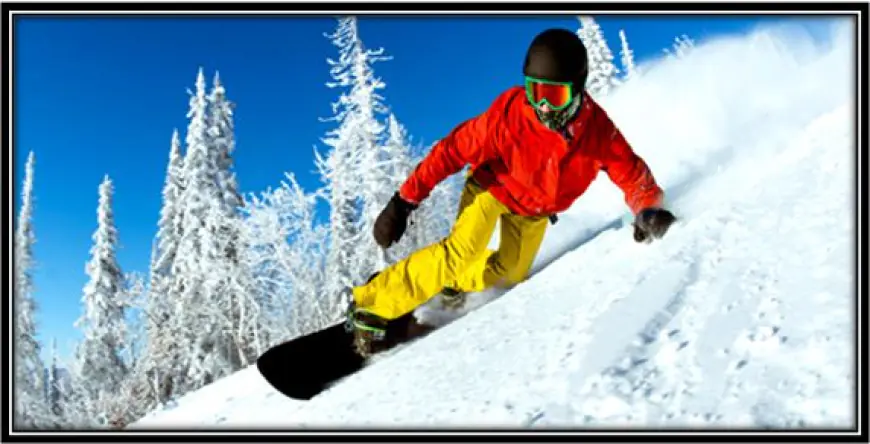What should we know about staying safe while playing winter sports?
Discover the top tips for staying safe during winter sports activities. Ensure a great time on the snow with these safety guidelines.

Introduction: The thrill and risks of winter sports
As the temperature drops and snow blankets the mountains, winter sports enthusiasts eagerly anticipate hitting the slopes for skiing, snowboarding, and other exhilarating activities. The adrenaline rush of racing down a steep run or navigating through powdery terrain is undeniably thrilling. However, it's crucial to acknowledge the inherent risks associated with these high-speed sports. From potential injuries due to falls or collisions to the dangers of avalanches in backcountry areas, winter sports come with their fair share of hazards that can't be overlooked.
These activities require not only physical prowess but also mental alertness and a sound understanding of safety measures. In addition to the risk of injury, extreme weather conditions can pose significant challenges during winter sports outings. Whether it's reduced visibility due to blizzards or sudden changes in terrain caused by fresh snowfall, participants must remain vigilant at all times. While the allure of gliding down snowy slopes is undeniable, it's essential for individuals to approach these sports with caution and preparedness to ensure a safe and enjoyable experience.
Understanding the environment: Snow, ice, and weather
Understanding the environment is crucial when engaging in winter sports. Snow and ice are not just scenic backdrops; they pose various risks to athletes. The texture of snow can significantly impact performance and safety, with fluffy powder providing softer landings than packed snow or icy patches. Similarly, understanding weather patterns is vital for planning outdoor activities, as rapid changes can create hazardous conditions. By comprehending these elements, athletes can better anticipate potential dangers and prepare accordingly.
Moreover, recognizing how snow and ice interact with the environment is essential for effective risk management. Avalanches, frostbite, or hypothermia are all products of environmental dynamics that need to be considered before hitting the slopes or venturing onto frozen lakes. A deeper understanding of these factors empowers athletes to make informed decisions about their own safety and take preventive measures to avoid mishaps. Ultimately, gaining knowledge about snow, ice, and weather not only improves performance but also enhances awareness of the inherent risks in winter sports.
Gear up for safety: Proper equipment and clothing
When it comes to winter sports, gearing up for safety is non-negotiable. Proper equipment and clothing are essential for protecting yourself from the cold, as well as potential injuries. Investing in high-quality gear such as helmets, goggles, and padding can make a world of difference in safeguarding against accidents. Additionally, choosing the right clothing made from moisture-wicking and insulating materials can keep your body warm and dry, preventing hypothermia and frostbite.
It's also crucial to ensure that your equipment fits properly and is well-maintained. Ill-fitting boots or skis can increase the risk of falls or strains, so take the time to get professionally fitted before hitting the slopes. Moreover, regularly inspecting your gear for any signs of wear and tear can help prevent unexpected malfunctions during your winter sport activities. Remember, taking these extra precautions when it comes to gear will not only enhance your performance but also keep you safe on your outdoor adventures.

Know your limits: Understanding your skill level
Understanding your skill level is crucial when it comes to participating in winter sports. It's essential to recognize your limitations and not push yourself beyond what you're capable of. Overestimating your abilities can lead to serious injuries, so be honest with yourself about what you can and cannot handle on the slopes.
Knowing your limits also involves being aware of the specific conditions and terrain that may be challenging for you. Whether it's steep mountain trails or icy surfaces, understanding how these factors impact your skills is vital for staying safe during winter activities. By acknowledging your skill level and respecting your limits, you can enjoy winter sports while minimizing the risk of accidents or mishaps.
Remember that learning new skills takes time and practice – don't rush into advanced levels before mastering the basics. Embracing a mindset of continuous improvement will help you progress at a pace that suits you, ensuring a safer and more enjoyable experience on the slopes this winter.
Stay informed: Weather conditions and avalanche awareness
Staying informed about weather conditions and avalanche awareness is crucial for anyone planning to engage in winter sports. The dynamic nature of the weather can greatly impact safety, performance, and overall enjoyment. By keeping an eye on forecasts and understanding local climate patterns, outdoor enthusiasts can make informed decisions about when and where to partake in their chosen activities. Additionally, being aware of avalanche risks and understanding how to recognize danger zones is essential for those venturing into mountainous terrain. A basic knowledge of snowpack stability assessments, route planning, and carrying proper safety gear can make all the difference between a thrilling adventure and a potentially life-threatening situation.
In this age of technology, there are numerous resources available for staying updated on weather conditions and avalanche warnings. Utilizing mobile apps, online platforms, or local information centers can provide real-time data that helps individuals make timely decisions. Furthermore, joining guided tours or participating in avalanche safety courses can offer valuable insights from experienced professionals who know how to navigate winter landscapes safely. Ultimately, staying informed not only enhances preparedness but also contributes to a deeper appreciation for the natural environment while minimizing potential risks associated with winter sports adventures.
Buddy system: Importance of skiing snowboarding with others.
The buddy system is an essential aspect of staying safe while participating in winter sports such as skiing and snowboarding. Having a buddy with you on the slopes offers an extra layer of protection in case of emergencies, accidents, or unexpected weather conditions. Not only does it provide a sense of security, but it also enhances the overall experience by enabling shared memories and providing moral support to each other.
Furthermore, skiing or snowboarding with a friend can improve one's skills through mutual encouragement and feedback. It promotes a healthy level of competition that motivates individuals to push their limits while ensuring that there’s always someone around to lend a helping hand if need be. Ultimately, engaging in these exhilarating activities with others not only fosters camaraderie but also significantly reduces the risks associated with partaking in winter sports alone.
Conclusion: Enjoy winter sports while staying safe
In conclusion, while the thrill of winter sports is undeniable, it's crucial to prioritize safety to fully enjoy these activities. Adhering to recommended safety guidelines and using appropriate gear can significantly reduce the risk of accidents and injuries. Additionally, understanding one's limits and staying mindful of changing weather conditions is pivotal in ensuring a safe and enjoyable experience on the slopes or frozen terrain.
Moreover, seeking professional instruction and gradually progressing from easier to more challenging runs can help minimize the likelihood of accidents. Embracing a mindset that values safety above all else not only enhances the overall winter sports experience but also fosters a culture where individuals look out for their well-being as well as that of others. By adopting these strategies, winter sports enthusiasts can relish their time on the snow with confidence, knowing they are taking proactive steps to mitigate potential hazards.







